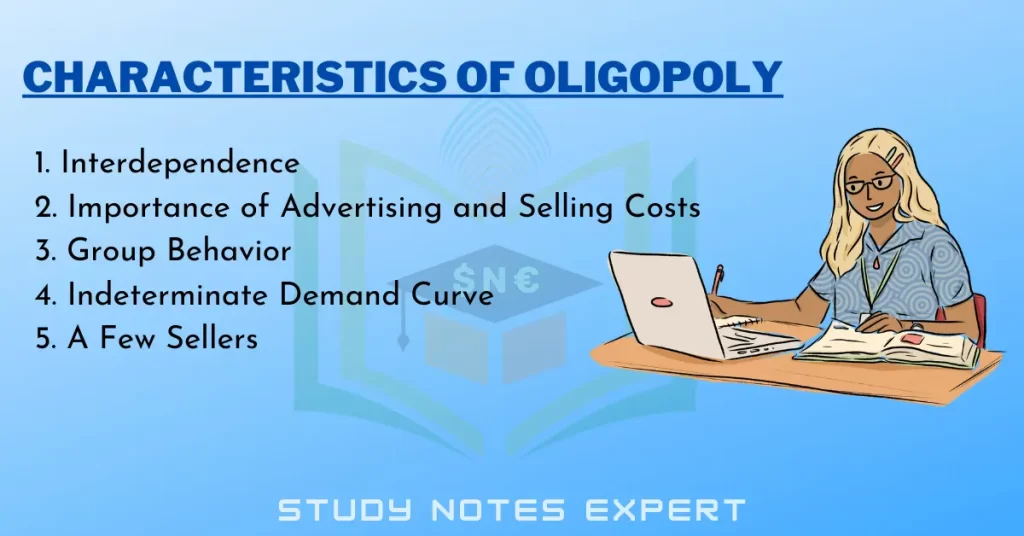An oligopoly market is a situation in which there is a tremendous amount of competition between several large companies and a degree of interdependence within the firm’s decision-making. Every company recognizes interdependence. Every decision one company makes (be it price, product, or even promotion) impacts the competitor’s trade, resulting in counter moves. It leads to dependence on the competitor’s behavior on one’s own. Therefore, it helps in decision making. A significant alteration in the policies of one firm could have immediate and immediate effects on the competitors.
That is how competitors typically respond with strategies to counter each other. It is the start of a game that involves actions and countermoves among the firms that are competing. The oligopolists will have to employ both methods of defensive as well as aggressive marketing to win this game.
Definition of Oligopoly
As per P.C. Dooley, “An oligopoly is an industry that has only several sellers, providing differentiated or homogeneous products. There are only a few sellers that recognize their interdependence”.
In the words of Mansfield, “Oligopoly is a market structure characterized by a few companies and a lot in interdependence.”
In another way, it is a market in which the number of companies is not large (but more significant than) that offer homogeneous, differentiable products that are similar. Therefore, it could be one of two types:
- With differentiation in the product with oligopoly market and
- Oligopoly market without differentiation of products is also referred to as competition within a small number of marketers.
The automotive and cold-drinks industries are examples of oligopolies without the differentiation of products. India has a limited number of automobile and cold drink producers.
Main Characteristics of Oligopoly

The characteristics of this market are as follows:
1. Interdependence
Interdependence in decision-making among a small number of companies in the market oligopoly is an essential characteristic of the oligopoly. The reason is that if the competition is small, any changes in output. Price, product, or product offered by one company directly influences the rival’s business, and they will then alter their production, price, or marketing strategy based on the circumstances. Therefore, an oligopolistic company should take into account the only demand for industrial products on the market, as well as the reactions of other companies in response to any decision made by it.
2. Importance of Advertising and Selling Costs
Interdependence between Oligopolists shows the direct influence on different firms to use marketing tools which are both offensive and defensive, to achieve more significant market share or keep their current market share. Many companies need to invest high costs for marketing and other sales promotion strategies to achieve this. Thus, sales and marketing costs are essential in it.
3. Group Behavior
The Oligopoly market theory is a group behavior theory and is not a mass or individual behavior model. In the case of oligopolists, the concept of profit-maximizing behavior may not be quite as reliable. There is generally no acceptance of the theory of group behavior.
4. Indeterminate Demand Curve
Due to the interdependence of a firm in an oligopoly market and a specific company’s inability to anticipate another company’s actions, determinateness and certainty are lost because demand curve faces an oligopolistic business. The firms do not have an exact demand curve due to interdependence and uncertainty. There is a change in the demand curve of oligopoly market due to the reaction of rival firms to the changes made by this company. If one firm alters the price of its product, the demand will be influenced by the price changes made by competitors.
5. A Few Sellers
There is a tiny number of sellers in the market of oligopoly. A small number of sellers represents an essential portion of the total industrial output created by every company and are likely to influence market conditions significantly.
Advantages of Oligopoly
The advantages of oligopoly are as follows:
- Profits of huge magnitude are paid to the big companies that hold unwavering control over the market because there are a few market players.
- Most of the time, products from two competing companies create one big firm. Therefore, whichever company makes a profit, the parent company ultimately makes the profit.
- Businesses can set prices based on their preferences because businesses that operate on an oligopolistic basis have complete control over the price. While this isn’t legal, it is beneficial to these companies.
- In an oligopolistic setting, market dominant players generate long-term profits. That is because older businesses have no permission to expand their percentage in the marketplace. Additionally, it blocks new competitors from entering the marketplace through various entrance barriers.
- These companies earn huge profits, which can utilize for the research and development of innovative methods and products.
- The production costs of products decrease after using the oligopoly. That is because companies that produce similar products can produce goods through one another’s cooperation.
- It offers a distinct advantage for consumers because they can quickly and easily compare prices with only a few market players.
- Businesses must fairly set prices due to the ease of pricing, which is an incentive from a customer’s point of view.
- Customers can easily plan and stabilize their expenditures due to stable market prices, which can stabilize the trade cycle.
Disadvantages of Oligopoly
A few of the disadvantages of oligopoly are :
- Although price setting may prove beneficial for businesses when it’s not handled honestly, it could result in negative consequences for clients.
- In an oligopolistic marketplace, small-scale businesses’ innovative strategies or plans fail to realize because they cannot compete with the market’s dominant control. Realizing their ideas can only be achieved if one of the leading players utilizes them.
- In an oligopoly market, small companies do not succeed in establishing their business as a brand since most of their market has already been dominated by more giant corporations.
- The dominant companies are not inclined to rethink their products because they have little competition. Firms can’t make dependent decisions and should constantly consider the opposition players’ views on the market.
- Due to the existence of numerous entry barriers that prevent new companies from being able to get into the market. The fairness of wealth distribution is not realized since the significant players generate the most profit, leaving smaller players without any benefits.
Pricing and Output Determination Under Oligopoly
In the oligopoly model, there is no definitive price-output determination theory. That is due to the interdependence of oligopolistic companies in their decision-making process and the uncertain reaction patterns of rival companies. It creates uncertainty in the demand curve of each firm. Because of the interdependence between a firm’s behavior and the uncertainty of its reactions, marketers can identify a range of behavior patterns.
Various economists make different assumptions about the oligopolies’ goals, and consequently, different patterns of behavior are assumed by firms following. Different patterns of behavior could be:
1. Collaboration between adversaries in their goal.
2. Engage in a battle with rivals to increase market share.
3. Variety of agreements.
In oligopoly conditions, the range of price decision models is devised by economists. That is based on the assumption of group behavior in companies that are an oligopoly.
The various models are:
1. Non-collusive model of oligopoly for Sweezy (Kinked Demand Curve)
2. Collusive oligopoly Model.
Why is it called Oligopoly?
The word oligopoly comes from the Greek words for “few” and “to sell.” An oligopoly is a market structure in which only a few firms produce a product. It can lead to high prices and limited competition.
What are the 4 Characteristics of Oligopoly?
The main four characteristics of oligopoly are:
1. Few firms
2. Interdependence
3. Barriers to entry
4. Homogeneous or differentiated products
How Price and Output is Determined in Oligopoly?
An oligopoly is a complex market structure with many variables that can affect price and output. However, some factors that can influence price and outcome in an oligopoly market include the number of firms in the market, the level of differentiation among firms, the level of cooperation among firms, and the level of competition.

